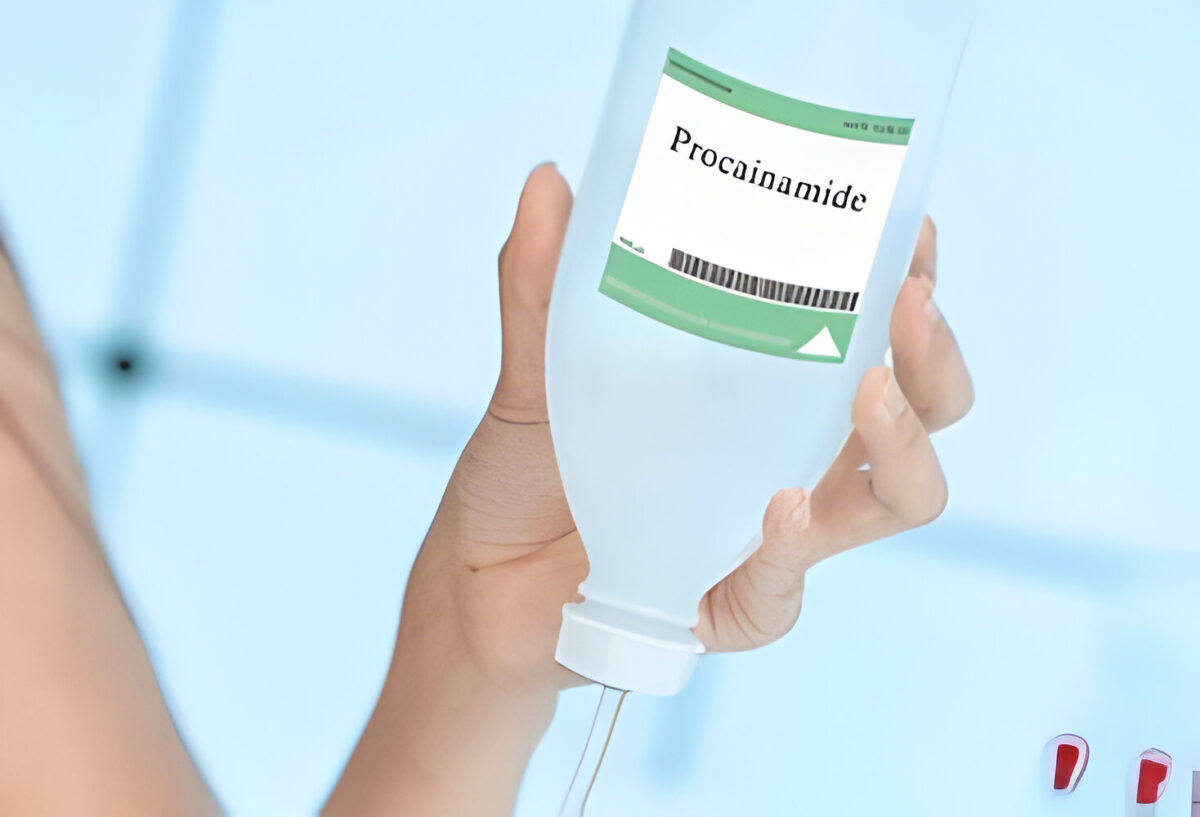Pharmacotherapy is a crucial treatment in advanced life support. It helps to increase cardiac contractility while increasing or decreasing cardiac chronotropy. It also helps to treat cardiac arrhythmias. Hence, the use and dosage of certain medications are crucial for ACLS clinicians to understand.
Procainamide is critical in ACLS and other medical scenarios. By acting as a sodium channel blocker, it treats the following:
- Atrial fibrillation with rapid ventricular response (AF with RVR)
- Stable ventricular tachycardia
- Atrial fibrillation from Wolf-Parkinson-White (WPW) syndrome
Do you want to know more about procainamide ACLS? Keep ready to know the pharmacology, dosage, and more.
Master ACLS Now
Get ACLS certified with confidence
What is procainamide?
Procainamide is a type of Type IA antiarrhythmic. This is in accordance with the Vaughan-Williams (VW) classification system of antiarrhythmics. It was initially approved by the FDA in 1950. It was popular for a short time prior to other medications.
However, it has become widely used to treat arrhythmias, specifically stable ventricular tachycardia. It is prescribed when alternate options of treatment are not working. This offers a backup approach to managing a few arrhythmias.
This drug acts on the sodium channel and blocks transmission. As a result, this slows conduction through the atrioventricular node. Procainamide treats stable ventricular tachycardia. However, it is beneficial for treating AF with RVR, including AF. The primary side effect of procainamide is hypotension as a result of reduced inotropy.
Pharmacology
Procainamide blocks the fast sodium channels in cardiac myocytes. This decreases the firing of the myocyte cells. This slows down the cardiac depolarization through the atrioventricular node and the bundle of His. Hence, procainamide causes a decreased chronotropy of the heart. Additionally, procainamide also has the unique property of slowing cardiac conductivity through accessory pathways in the heart. This is also found in WPW syndrome.
What are the uses of procainamide in cardiac care?
The primary use of procainamide in ACLS treatment is for stable ventricular tachycardia. It is beneficial for treating AF with RVR. Treatment of ventricular tachycardia helps prevent the arrhythmia from degenerating into ventricular fibrillation and cardiac arrest. For patients experiencing acute coronary syndrome (ACS) or premature ventricular contractions (PVCs), you must not treat them unless they cause hemodynamic instability.
You can commonly see this among patients with ACS and after treating them for acute myocardial infarction with coronary stunting or thrombolytics. You can see PVCs in patients with electrolyte abnormalities. Patients with ACS or other acute medical causes may have non-sustained ventricular tachycardia. This is VT, which lasts <30 seconds and does not cause hemodynamic instability or other systems. You should not receive procainamide or other antiarrhythmic therapy for asymptomatic VT. Administer procainamide for sustained VT.
Is procainamide in the ACLS algorithm?
Procainamide is beneficial for treating several tachyarrhythmias. For example, it helps treat atrial fibrillation with RVR atrioventricular node reentry tachycardias. You can use procainamide to treat stable monomorphic VT and polymorphic VT. Although procainamide can be used to treat pulseless VT or VF, Its utility is limited by the need for a slow infusion of the medications.
You should begin ACLS care with basic life support. Address airway, breathing, and circulation issues prior to any additional interventions. If a patient shows ventricular tachycardia and suffers cardiac arrest, the ACLS provider must defibrillate the patient instead of administering a medication like procainamide.
Read More: Commonly Used Medications in ACLS
What is the procainamide dose ACLS?
You should use procainamide in patients with tachyarrhythmias who are hemodynamically stable. Once the clinician has determined the cardiac rhythm by electrocardiogram, you must start treatment of the underlying arrhythmia with medication.
Here are the procainamide dosing ACLS regulations:
| Indication | Route | Dose | Administration |
| Atrial fibrillation with rapid ventricular response | Infusion IV or IO | 25-50 mg/minute | Administer until arrhythmia suppressed or you give a maximum dose of 17 mg/kg |
| Atrial fibrillation that results from Wolff-Parkinson-White Syndrome | Infusion IV or IO | 20-50 mg/minute | Administer until arrhythmia suppressed or you give a maximum dose of 17 mg/kg |
| Other atrial tachyarrhythmia | Infusion IV or IO | 20-50mg/minute | Administer until arrhythmia suppressed or you give a maximum dose of 17 mg/kg |
| Monomorphic ventricular tachycardia with a pulse | Infusion IV or IO | 20-50 mg/min until arrhythmia suppressed, then maintenance infusion: 1-4 mg/min. Avoid prolonged QT or CHF. | Administer until arrhythmia suppressed or you give a maximum dose of 17 mg/kg |
| Polymorphic ventricular tachycardia with a pulse | Infusion IV or IO | 20-50 mg/min until arrhythmia suppressed, then maintenance infusion: 1-4 mg/min. Avoid prolonged QT or CHF. | Administer until arrhythmia suppressed or you give a maximum dose of 17 mg/kg |
What to consider before using procainamide: Procainamide acls guidelines
While administering procainamide, patients must have continuous cardiac monitoring and frequent blood pressure monitoring. Clinicians must avoid administering procainamide in the following situations:
- Prolonged QT intervals
- Congestive heart failure
- Hypomagnesemia or hypokalemia
Read More: Study Guide To Body Systems: ACLS Certification Resource
Conclusion
Procainamide ACLS is thus a beneficial medication that can treat both atrial and ventricular tachyarrhythmia. Consider the procainamide dose as the primary side effects are hypotension, widening of the QRS interval, and prolongation of the QT interval. Procainamide helps treat certain arrhythmias, and an equipped practitioner must administer it. Knowledge and training are crucial, especially while administering life-saving drugs.







